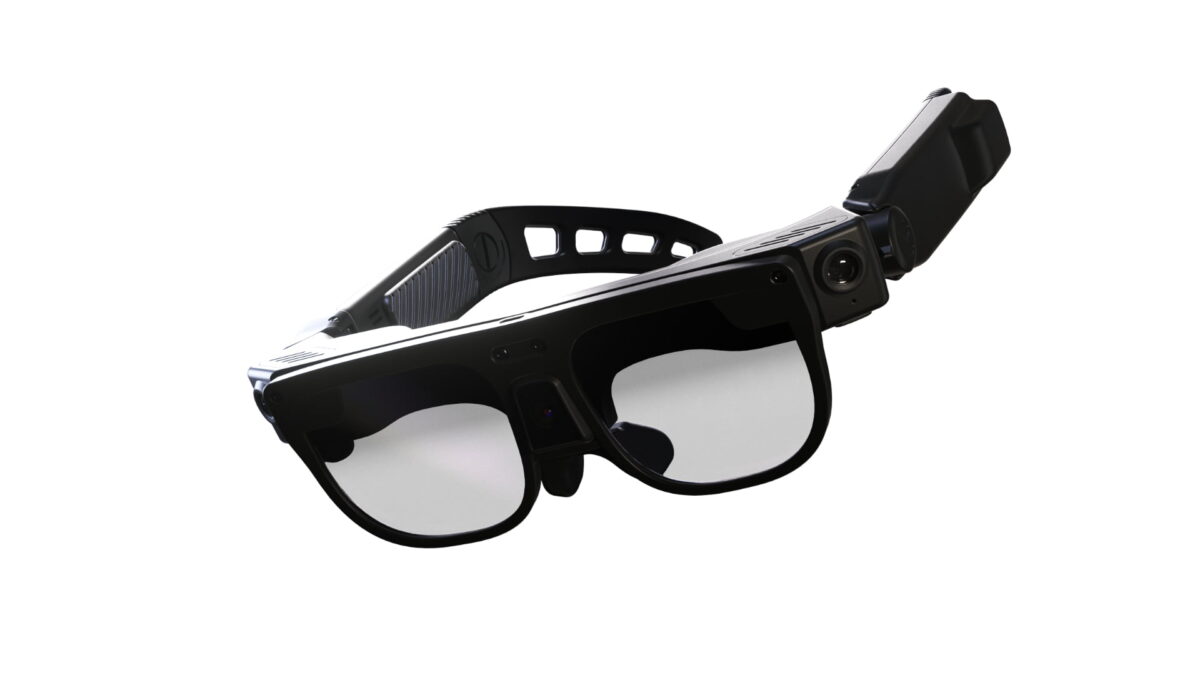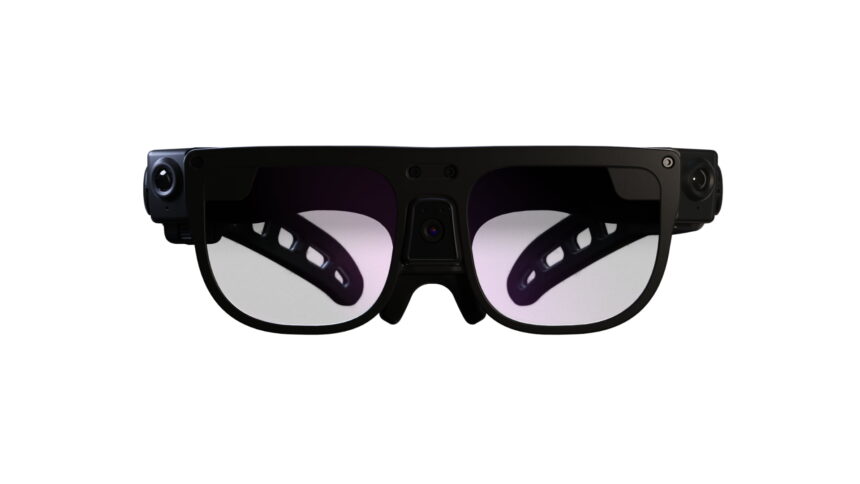Digilens Argo is a standalone AR headset with voice control

The standalone Digilens Argo AR headset is supposed to deliver good images even in low-light conditions and can be operated hands-free.
The display specialists from Digilens present the Argo, a new AR headset that is aimed at businesses and industry. First hands-on reports attest to the device's remarkably clear display. However, Digilens does not use its new generation of plastic waveguide displays.
Content
Focus on voice control in B2B scenarios
The Argo headset is supposed to work hands-free and independent of the body posture. This is ensured by an integrated voice control and automatic gaze recognition. According to the manufacturer, the built-in microphones pick up voice commands even in noisy environments. Digilens clearly focuses on functionality and robustness in the design of the B2B headset.
The temples are removable, allowing the lenses to be inserted into optionally available add-ons such as protective eyewear housings. The AR headset is IP65 certified and suitable for industrial and military use. Digilens sees further areas of application in healthcare, construction and logistics, education and telecommunications. There, the AR headset is intended to support virtual training, remote assistance with maintenance or repair work, and medical training, for example.
The AR headset is powered by a Qualcomm Snapdragon XR2, which is also used in mobile VR headsets like Meta Quest 2 or Pico 4. A player, such as a smartphone like in the Nreal Light, is not necessary. The Argo works standalone and displays head-up instructions as well as 3D objects for augmented reality applications, streams videos or shows photos.
Three cameras and hot-swappable battery
A 6DoF tracking camera sits on each of the temples on the left and right sides of the headset. This is joined by a 48MP camera just above the nose. The camera features autofocus, digital zoom and pixel binning (explanation). This is supposed to enable detailed pictures even in low-light conditions. In addition, there are optical and electronic image stabilizers.

The cameras for recording and tracking are located on the left, right and in the center of the Digilens Argo's casing.
The Argo is meant to capture high-resolution video and photos, stream its field of view to other devices, and receive video streams from other headsets or smartphones. The cameras also act as barcode and QR code scanners.
Speakers for surround sound are embedded in the temples, in addition to the five microphones. The battery can either be recharged via a USB-C port or replaced in hot-swap mode. Wi-Fi 6E, Bluetooth 5.2 and GPS are also integrated.
Bright displays in Gorilla Glass casing
The holographic waveguides of the Argo are supposed to achieve a transparency of more than 85 percent and sit in particularly stable lenses made of Gorilla Glass. Digilens states the brightness of the LCOS LED display to be over 2,500 nits. The field of view is 30 degrees in landscape mode.
The displays are the third generation Digilens Crystal30. Digilens does not use the plastic displays that were introduced in the summer of 2021. The plastic version is said to be almost as powerful as the glass waveguides, but lighter and cheaper.
It is not yet known what price Digilens will charge for the Argo Smartglasses.
Small digital field of view and normal natural field of view
CNET editor Scott Stein tested the Digilens Argo and is impressed with the clarity of the color display projected onto the lens. "I saw no shimmers, and none of the rainbows or smudging I've seen on many headsets. It was like looking through a clean pair of glasses," Stein said.
The field of view was smaller than the Hololens 2, but brighter, which was useful for outdoor viewing, he said. Stein didn't feel restricted in his natural field of view: "The effect for me was identical to wearing everyday glasses of my own."
As with most AR headsets, however, the Argo's display area felt limited. For Stein, it was good enough to read information and see photos. Voice control is responsive, according to Stein.
Note: Links to online stores in articles can be so-called affiliate links. If you buy through this link, MIXED receives a commission from the provider. For you the price does not change.